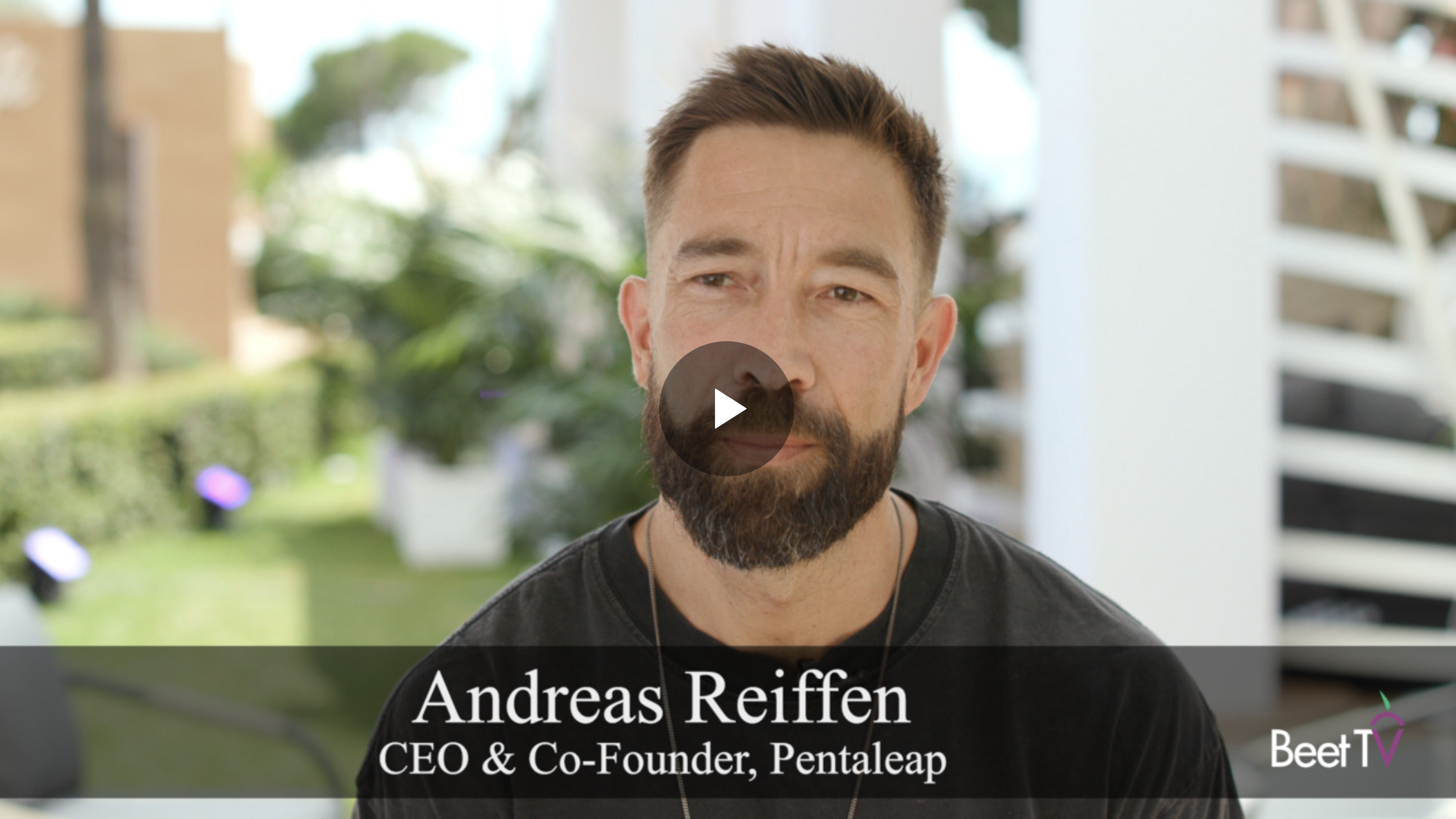Retailer Strategies for Sponsored Product Ad Success
.png)
In a recent episode of the Retail Media Roundtable podcast, hosted by Marie Claire Puffett, Director of Industry Development and Insights at IAB Europe, two retail media experts shared their unique perspectives: Andrew Lipsman, Independent Analyst at Media Ads and Commerce, and Mark Burton, our Chief Product Officer at Pentaleap.
Here are some of the key insights from their chat.
The Untapped Potential of Retail Media Networks
The discussion focused on our H2 Sponsored Products Benchmarks Report, which examines growth trends and opportunities in the retail media space. Mark highlighted a key finding: "We sometimes talk about sponsored products as being a maxed-out category, but in the latest report, Staples grew by 17% in coverage and target categories by 12%. It’s clear there’s still significant room for growth."
Andrew agreed, adding his high-level perspective:
"When I look at everything holistically, I see an incredible amount of untapped onsite opportunity for most retail media networks. Amazon and Walmart may lead the pack, but even they have room to grow, and for everyone else, there’s so much white space to fill."
Challenges Ahead: Why Growth Takes Time
Despite the optimism, both experts acknowledged that scaling retail media isn’t without its challenges. Andrew explained:
"Retailers are trying to be media companies—but it’s not a core competency. During 2020 and 2021, there was an influx of incremental dollars that flowed disproportionately to retail media, but now they have to raise their game. It often comes down to implementing the right tech and strategies, which takes time."
Mark emphasized the importance of customer-centric innovation:
"Retail media tech needs to align with how customers shop. For instance, in industries like fashion, curated search is emerging as a new norm. Retailers must adapt their onsite experiences and ad formats to stay relevant."
Striking the Balance in Onsite Ad Formats
When asked about balancing ad format complexity, Andrew Lipsman advised, "Follow Amazon's lead. Amazon is the context that most have in terms of nomenclature and the type of units. Most RMNs have parallel types of ad units, so meet the advertisers where they are as best you can. And then, in your category, if you're a lifestyle category, you might want to have a bespoke ad unit or two... but just don't make it more complex than it needs to be for the advertiser."
Mark Burton echoed the sentiment, emphasizing how advertisers face significant challenges managing campaigns across multiple networks: "It’s not just the different formats, it’s managing 30 different retail media networks potentially all at once. Having an industry standard around the language and also the purposes for the units is one thing. I would also bring it into measurement as well. Having really clean, joined-up measurement across those different channels... within onsite, that should be something retailers can give advertisers to show how various types of units are performing."
Fixed vs. Fluid Ad Strategies
On the topic of fixed versus fluid ad placements, Mark Burton explained:
"Fixed sponsored products always show up in the same places... but we are now seeing a lot of retailers adopt a fluid approach. In those, we can basically see ads being placed dynamically in almost any position in the grid. For example, Amazon places ads dynamically in more or less any position except two or three."
He continued, "If you can place ads dynamically, we tend to see those retailers having more ad slots available on the page, more ad slots potentially leads to more ad fill rate, it leads to more clicks, leads to more sales and revenue. Pound for pound, your page is probably worth more if you’ve got a fluid strategy."
Andrew Lipsman added: "Every retailer is aspiring to have as little distinction between paid and organic results as possible because customer experience is the most important thing. If your ads are really lacking in relevance, it detracts from the customer experience."
In terms of technical implementation, Mark Burton noted that fluid placements are achievable but require a mindset shift:
"The technology exists to do that 100%. Like Pentaleap has this technology that helps retailers integrate and run fluid ads. But we recognize that it’s a mindset shift... the fixed positions have always been quite common within retail media, so it’s as much an organizational shift as it is a technical shift."
The Long Tail of Brands
Andrew Lipsman emphasized the importance of third-party sellers for retail media growth:
"Amazon is built on third-party sellers at this point. They’re the majority. Walmart was way behind Amazon for years, but in the last three years, they’ve kicked up the number of marketplace sellers. Now they have a really robust marketplace, and guess what’s happening to Walmart Connect? They’re a scaled multi-billion-dollar ad business now, growing 30% year over year."
He continued, "The marketplace dynamic is absolutely a key driver. Most RMNs that don’t have marketplaces or have limited capabilities could be mitigating their potential to drive strong monetization. Most retailers should be much more proactive in building out those marketplaces."
Mark Burton added: "It really surprised me how stark the long tail drop-off was among some retailers. For those with a shorter long tail, it’s a really small percentage of advertisers, so there’s clearly upside in reaching more advertisers outside of their core.
For the rest of this discussion—check out the full podcast recording with the IAB here.
For more context on these sponsored products trends, check out the H2 2024 Sponsored Products Report here.
Stay Ahead with Retail Radar
Subscribe for cutting-edge insight into the latest retail media developments and trends
.png)
.svg)





.webp)

